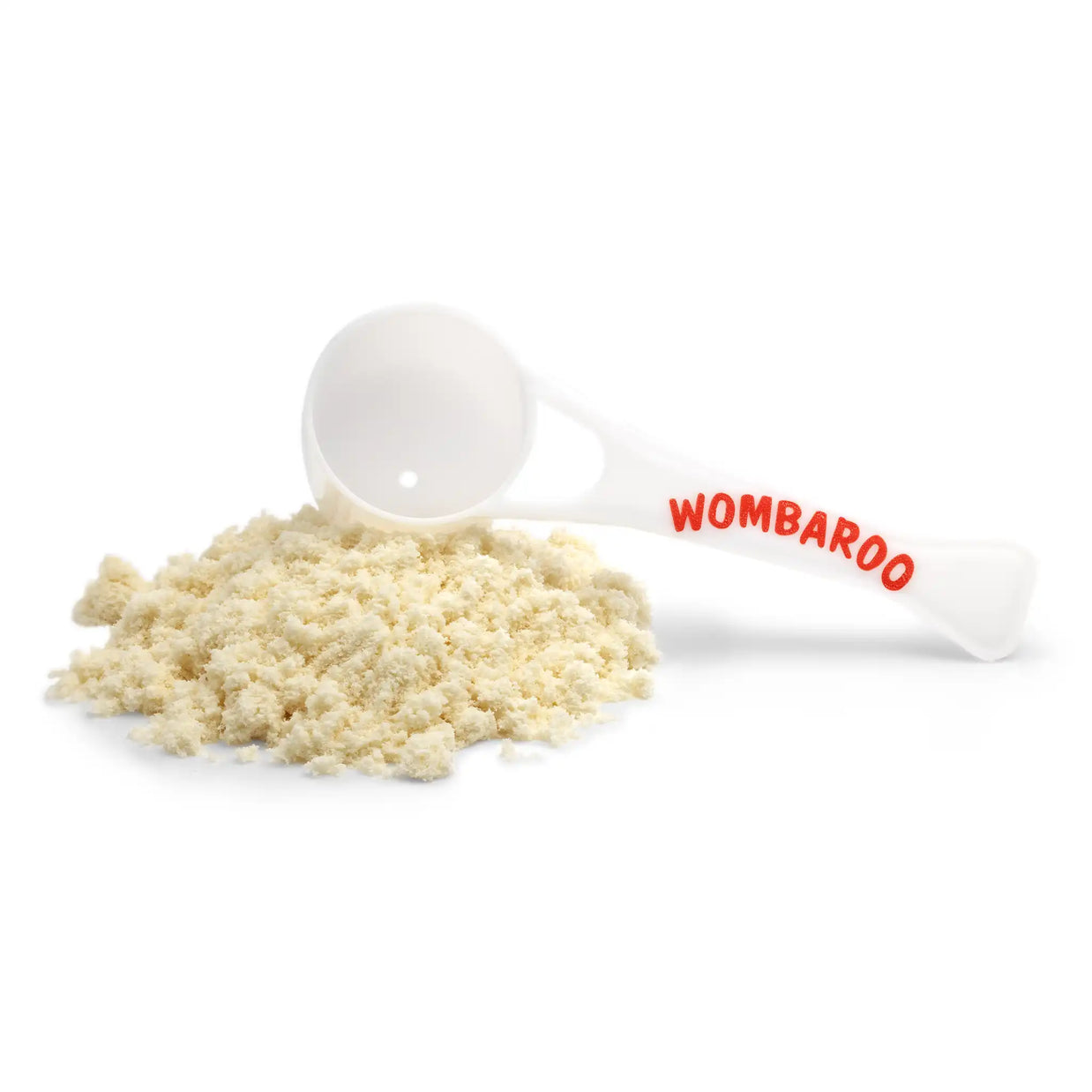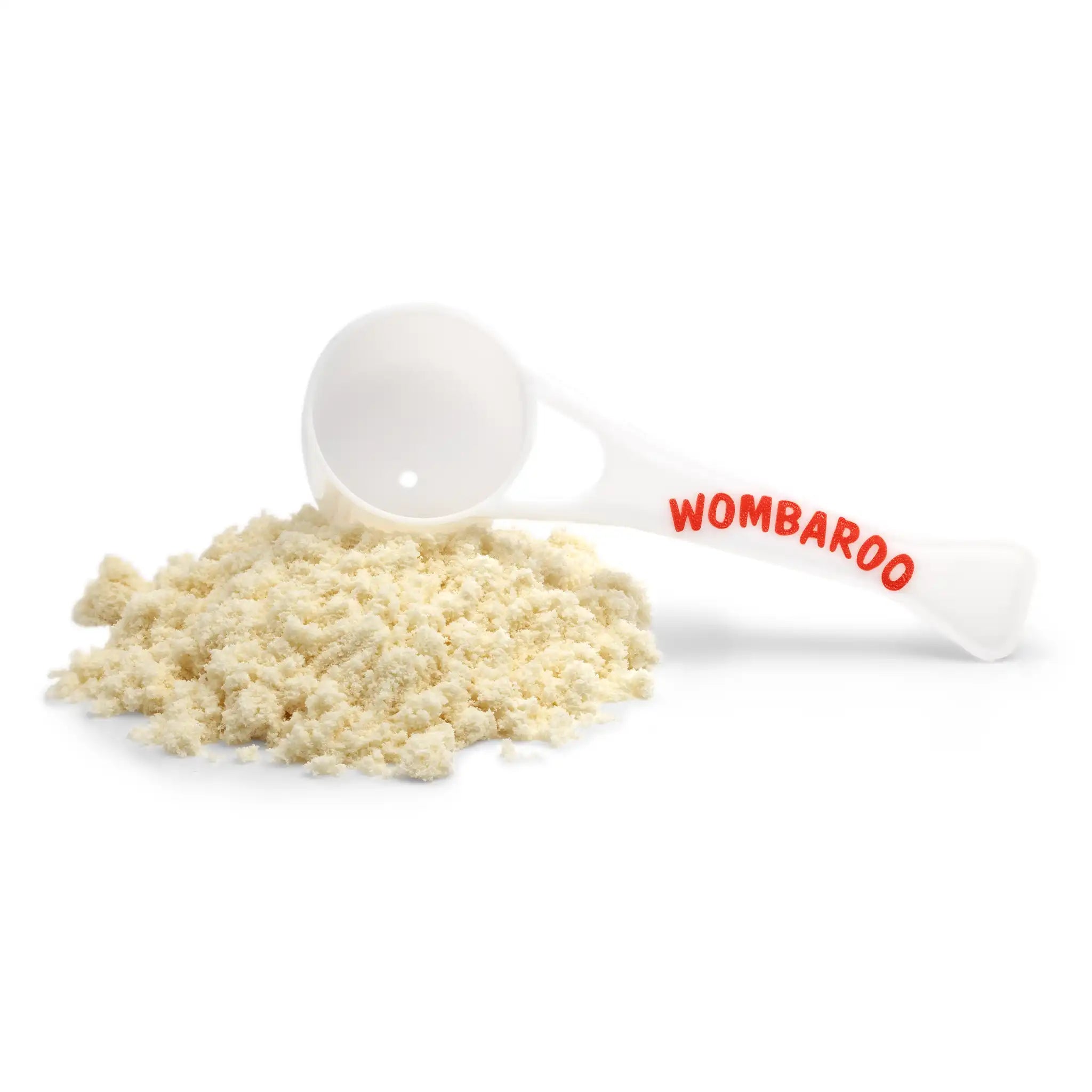Your cart (0)
Your cart is empty
Tax included and shipping calculated at checkout
Free Standard Shipping On U.S. Orders Over $100
Free Standard Shipping On U.S. Orders Over $100
Drawer menu
Tax included and shipping calculated at checkout
Subtotal: $0.00
This website uses cookies to ensure you get the best experience on your device.






High-quality milk substitute for orphaned alpacas. The milk formula is perfect for feeding orphaned crias or when the mother’s milk is limited. Specially formulated to match the composition of mother’s milk, Wombaroo formula is high in protein for improved growth rates and essential amino acids, vitamins and minerals to promote healthy fleece growth.
Newborns that did not receive colostrum from their mother may benefit from Impact Colostrum Supplement.
Australian made high-quality milk replacers. Wombaroo’s team of experts has worked since 1984 to develop scientifically backed premium milk replacers and food for exotic animals. Wombaroo has developed products specifically for zoos and captive breeding programs to support wildlife conservation projects worldwide.
To make 1 liter of milk: Mix 170 grams of powder to 850 mL of warm water.
Add about half the water to the powder first and mix into a paste. Then add the remaining water and mix thoroughly. Pre-boil the water to ensure it is sterilized. If the water is too hot, it can cause the milk to curdle; if it is too cold then it will be difficult to disperse the powder. An electric whisk can be used for mixing larger quantities.
Milk can be refrigerated for up to one day or frozen for up to 2 weeks. You can save time by making larger quantities and storing it frozen in small portions (e.g. ice cube trays), so that the required daily feed volumes can be easily thawed out. Once thawed, discard any unused milk, and wash feeding utensils thoroughly. Store unmixed powder in a cool, dry place.
Warm milk to about 95°F (35°C). Feed from a bottle with a nipple, with the bottle held vertically to simulate suckling from the mother’s udder. This extended neck position allows formula to flow directly to the third stomach compartment, where milk digestion occurs. Feeding milk via an elevated teat is preferred over bucket-feeding as this prevents milk from entering the first stomach compartment and causing digestive upset due to fermentation.
Feed every 2 hours for the first 4 days, reducing this to every 4 hours by the end of the first week and every 6 hours by week three. Always have clean drinking water available. Consult a veterinarian or experienced breeder for particular advice about caring for crias and young alpacas.
See back of the box for dosing instructions.
Depending on its sex, alpaca cria should weigh from 6 to 9 kg at birth and gain around 200 grams per day during the hand-rearing period. They typically double their body weight by 4 to 6 weeks of age. When possible, weigh the baby regularly to verify weight gain and determine the correct amount of milk to feed. Overfeeding milk can cause diarrhea, so always feed the suggested volumes found in the feeding guidelines on the back of the box.
Mother-reared cria are usually weaned at 6 to 9 months. However, it is usually impractical to hand feed a baby for this long and many owners begin weaning as soon as possible. Wombaroo advises feeding milk for at least 3 months, requiring about 75 liters of milk replacer in total. Young alpacas can be offered high quality, digestible feed and hay from 7-10 days of age. This starts the development of microbial digestion of plant material in the first stomach compartment and promotes weaning. Once they start to eat sufficient quantities of solid food, reduce the milk and increase the solids until they are fully weaned.
Whole milk solids, whey protein, casein, lactose, vegetable oils, omega-3 and omega-6 fatty acids, vitamins A, B1, B2, B3, B5, B6, B9, B12, C, D3, E, K, biotin, choline, inositol, calcium, phosphorus, potassium, sodium, magnesium, zinc, iron, manganese, copper, iodine, selenium.
High-quality milk substitute for orphaned alpacas. The milk formula is perfect for feeding orphaned crias or when the mother’s milk is limited. Specially formulated to match the composition of mother’s milk, Wombaroo formula is high in protein for improved growth rates and essential amino acids, vitamins and minerals to promote healthy fleece growth.
Newborns that did not receive colostrum from their mother may benefit from Impact Colostrum Supplement.
Australian made high-quality milk replacers. Wombaroo’s team of experts has worked since 1984 to develop scientifically backed premium milk replacers and food for exotic animals. Wombaroo has developed products specifically for zoos and captive breeding programs to support wildlife conservation projects worldwide.
To make 1 liter of milk: Mix 170 grams of powder to 850 mL of warm water.
Add about half the water to the powder first and mix into a paste. Then add the remaining water and mix thoroughly. Pre-boil the water to ensure it is sterilized. If the water is too hot, it can cause the milk to curdle; if it is too cold then it will be difficult to disperse the powder. An electric whisk can be used for mixing larger quantities.
Milk can be refrigerated for up to one day or frozen for up to 2 weeks. You can save time by making larger quantities and storing it frozen in small portions (e.g. ice cube trays), so that the required daily feed volumes can be easily thawed out. Once thawed, discard any unused milk, and wash feeding utensils thoroughly. Store unmixed powder in a cool, dry place.
Warm milk to about 95°F (35°C). Feed from a bottle with a nipple, with the bottle held vertically to simulate suckling from the mother’s udder. This extended neck position allows formula to flow directly to the third stomach compartment, where milk digestion occurs. Feeding milk via an elevated teat is preferred over bucket-feeding as this prevents milk from entering the first stomach compartment and causing digestive upset due to fermentation.
Feed every 2 hours for the first 4 days, reducing this to every 4 hours by the end of the first week and every 6 hours by week three. Always have clean drinking water available. Consult a veterinarian or experienced breeder for particular advice about caring for crias and young alpacas.
See back of the box for dosing instructions.
Depending on its sex, alpaca cria should weigh from 6 to 9 kg at birth and gain around 200 grams per day during the hand-rearing period. They typically double their body weight by 4 to 6 weeks of age. When possible, weigh the baby regularly to verify weight gain and determine the correct amount of milk to feed. Overfeeding milk can cause diarrhea, so always feed the suggested volumes found in the feeding guidelines on the back of the box.
Mother-reared cria are usually weaned at 6 to 9 months. However, it is usually impractical to hand feed a baby for this long and many owners begin weaning as soon as possible. Wombaroo advises feeding milk for at least 3 months, requiring about 75 liters of milk replacer in total. Young alpacas can be offered high quality, digestible feed and hay from 7-10 days of age. This starts the development of microbial digestion of plant material in the first stomach compartment and promotes weaning. Once they start to eat sufficient quantities of solid food, reduce the milk and increase the solids until they are fully weaned.
Whole milk solids, whey protein, casein, lactose, vegetable oils, omega-3 and omega-6 fatty acids, vitamins A, B1, B2, B3, B5, B6, B9, B12, C, D3, E, K, biotin, choline, inositol, calcium, phosphorus, potassium, sodium, magnesium, zinc, iron, manganese, copper, iodine, selenium.
